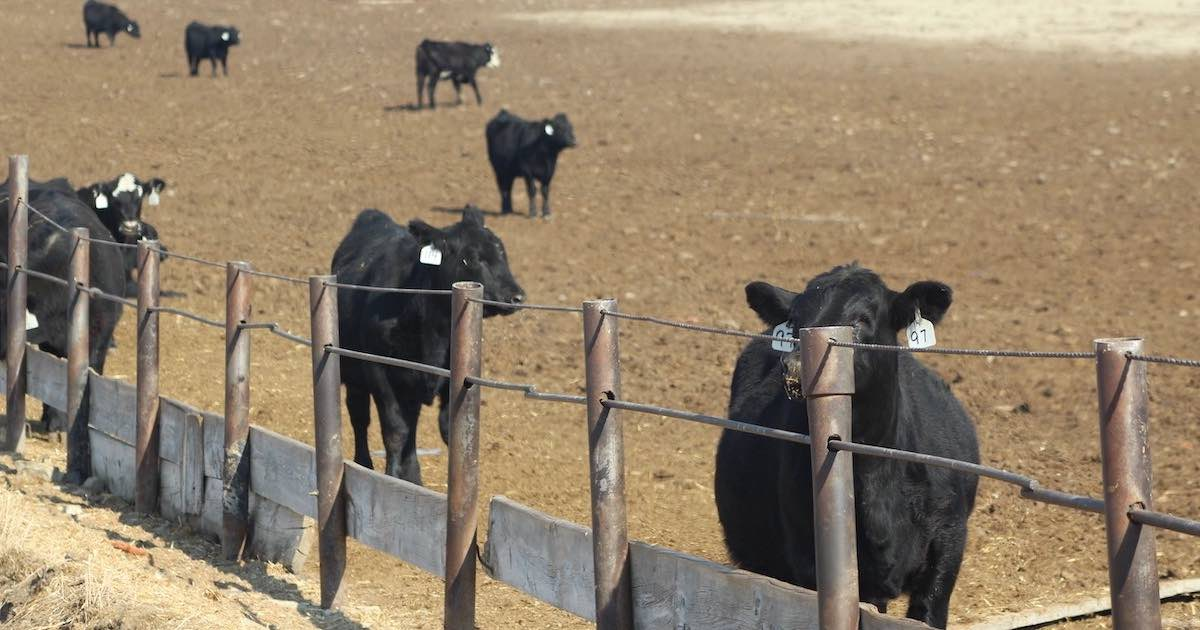- Tweet
- Printer Friendly
Montana Rancher Adapts Management to the Environment
From feed rations to on-arrival protocols, Rusty Ellis continues to find efficiencies
With more than 30 years of experience in the cattle business, Rusty Ellis has learned how to make the most of local resources on his backgrounding operation near Billings, Montana. His cattle can be found grazing near the Beartooth Mountains in the spring and summer, and are transported to another ranch with milder weather just northeast of Billings each winter.
His proximity to Billings enables Ellis to utilize byproducts as a cost-effective feed source for his cattle during the winter months. The ration typically includes a mix of distiller grains, wheat middlings, straw and beet pulp.
 “When you boil it down, this is largely a byproduct outfit,” Ellis says. “It’s all about finding ways to use products that nobody else is using. We can winter around 3,500 yearlings and 450 cows on very little hay.”
“When you boil it down, this is largely a byproduct outfit,” Ellis says. “It’s all about finding ways to use products that nobody else is using. We can winter around 3,500 yearlings and 450 cows on very little hay.”Preconditioned calves come in weighing just over 600 pounds in early fall and get started on a small amount of grass hay in the bunk before quickly transitioning to a mixed feed.
“By the third day, we can get calves eating along the bunkline on some wheat middlings — and depending on how good their intake is — they may get a little beet pulp with it,” Ellis says. “Usually within a week, I’ve got them on a ration and consuming 2.5% of their body weight.”
About 110 days after their arrival, calves are shipped, averaging 870 pounds.
“We’ve seen better daily gain and feed conversion in the last couple of years,” Ellis says. “This is partly because the cattle are getting better, and partly because we’re continuing to get better at what we do.”
On-arrival protocols help calves maximize daily gain
Just like utilizing various byproducts to reduce feed costs, Ellis has identified products and practices that fit his unique production system and help meet his goals.
“We buy preconditioned calves mainly through video auctions, and we like to work them when they get here,” Ellis explains. He knows that a comprehensive on-arrival protocol can help ensure calves are set up for success on his operation.
For Ellis, that means administering a second dose of a modified-live vaccine, implanting calves with Synovex Choice® and deworming with a single dose of Valcor® (doramectin and levamisole injection).
The unique combination of doramectin (a macrocyclic lactone) and levamisole (an imidazothiazole) found in Valcor provides true broad-spectrum efficacy for demonstrated control of internal and external parasites.1
“Combining the two ingredients makes a lot of sense,” he says. “No dewormer is going to control every parasite, but it’s important to keep the parasite load at a minimum. Valcor has done a wonderful job of that.”
Ellis also turns to a combination treatment for bovine respiratory disease (BRD). If calves start to show symptoms of BRD, Ellis uses Draxxin® KP (tulathromycin and ketoprofen injection) Injectable Solution under direction from his veterinarian to get calves back on track.
“We switched over to Draxxin KP three years ago and have been using the product since,” he says.
Contact your local Zoetis sales representative to learn more about strategic on-arrival protocols that help set calves up for success in their next production phase.
Zoetis offers a comprehensive approach to BRD from prevention to treatment.Important Safety Information
Draxxin® KP
Draxxin® KP has a pre-slaughter withdrawal time of 18 days in cattle. Not for use in female dairy cattle 1 year of age or older, including dry dairy cows. Not for use in beef calves less than 2 months of age, pre-weaned dairy calves, and veal calves. A withdrawal period has not been established for this product in pre-ruminating calves. Do not use in animals previously found to be hypersensitive to tulathromycin and ketoprofen. See full Prescribing Information, draxxinkp.com/piThis links to a pdf file.
Valcor®
Do not treat cattle with Valcor within 15 days of slaughter. Not for use in female dairy cattle 20 months of age or older, including dry dairy cows; not for use in beef calves less than 2 months of age, dairy calves, and veal calves. Safety has not been evaluated in breeding bulls. Use with caution in cattle treated with cholinesterase inhibitors. This product is likely to cause injection site swelling; tissue damage (including granulomas and necrosis) may occur. These reactions have resolved without treatment. See full Prescribing Information for Valcor®This links to a pdf file.
Refer to individual (Synovex) labels for complete directions for use, precautions, and warnings. Reimplant only if and as directed in labeling.
References
Data on file. Study Report No. A131R-US-21-940, Zoetis Inc.
